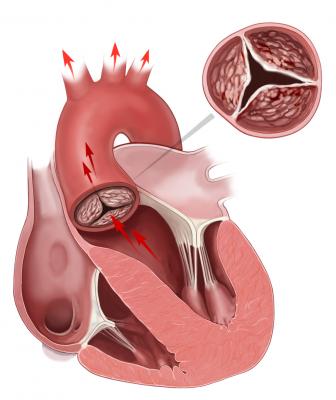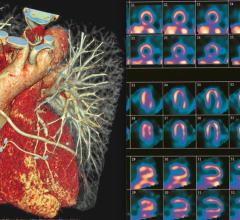
Nov. 4, 2014 — In an analysis that included approximately 35,000 participants, genetic predisposition to elevated low-density lipoprotein cholesterol (LDL-C) was associated with aortic valve calcium and narrowing of the aortic valve, findings that support a causal association between LDL-C and aortic valve disease, according to a study appearing in JAMA. The study is being released to coincide with its presentation at the Canadian Cardiovascular Congress.
Aortic valve disease remains the most common form of heart valve disease in Europe and North America and is the most common indication for valve replacement. Despite the heavy disease burden, no medical treatments are known to stop or slow disease progression. Plasma LDL-C has been associated with aortic in observational studies. Randomized trials with cholesterol-lowering therapies in individuals with established valve disease have failed to demonstrate reduced disease progression. If LDL-C plays a causal role in the earlier stages of aortic valve disease, this could have important implications for prevention, according to background information on the article.
Because of the random allocation of genetic information that occurs at conception, genetic variation can be used as an effective tool to distinguish potentially causal from noncausal biomarkers. Termed "Mendelian randomization," this approach has been successfully applied to assess for causality of several biomarkers with various clinical end points. Using this approach, J. Gustav Smith, M.D., of Lund University, Lund, Sweden, and colleagues, evaluated whether weighted genetic risk, a measure of the genetic predisposition to elevations in plasma lipids, were associated with aortic valve disease. The researchers included community-based cohorts participating in the CHARGE consortium (n = 6,942), including the Framingham Heart Study (cohort inception to last follow-up: 1971-2013; n = 1,295), Multi-Ethnic Study of Atherosclerosis (2000-2012; n = 2,527), Age Gene/Environment Study–Reykjavik (2000-2012; n = 3,120), and the Malmö Diet and Cancer Study (MDCS, 1991-2010; n = 28,461). Aortic valve calcium was quantified by computed tomography; prevalent and new diagnoses of aortic stenosis and aortic valve replacement were identified by record linkage with nationwide registers on hospitalizations and causes of death.
The researchers found that in the subgroup of the MDCS where lipid fractions were measured (n = 5,269), baseline LDL-C, but not HDL-C or TG levels, was significantly associated with new aortic stenosis. Also, the LDL-C GRS, but not HDL-C or TG GRS, was significantly associated with presence of aortic valve calcium in CHARGE and with new aortic stenosis in MDCS.
"Our findings link a genetically mediated increase in plasma LDL-C with early subclinical valve disease, as measured by aortic valve calcium, and incident clinical aortic stenosis, providing supportive evidence for a causal role of LDL-C in the development of aortic stenosis," the authors write. "These data suggest that, in addition to the established risks for myocardial infarction and other vascular diseases, increases in LDL-C are also associated with increased risk for aortic stenosis."
"Whether earlier intervention to reduce LDL-C could prevent aortic valve disease merits further investigation."


 January 23, 2024
January 23, 2024 








